Imagine this scenario: you’ve just brought your furry friend home after their neuter surgery, and now you’re faced with the important question of how long to keep that cumbersome cone on. It’s a common concern among dog owners, as we want to ensure our four-legged companions heal properly and comfortably. In this article, we’ll explore the recommended duration for keeping a cone on your dog after neuter surgery, as well as some alternative options to make the recovery process as stress-free as possible for your beloved pup. So, let’s get started and help you navigate through this post-surgery period with ease and confidence!
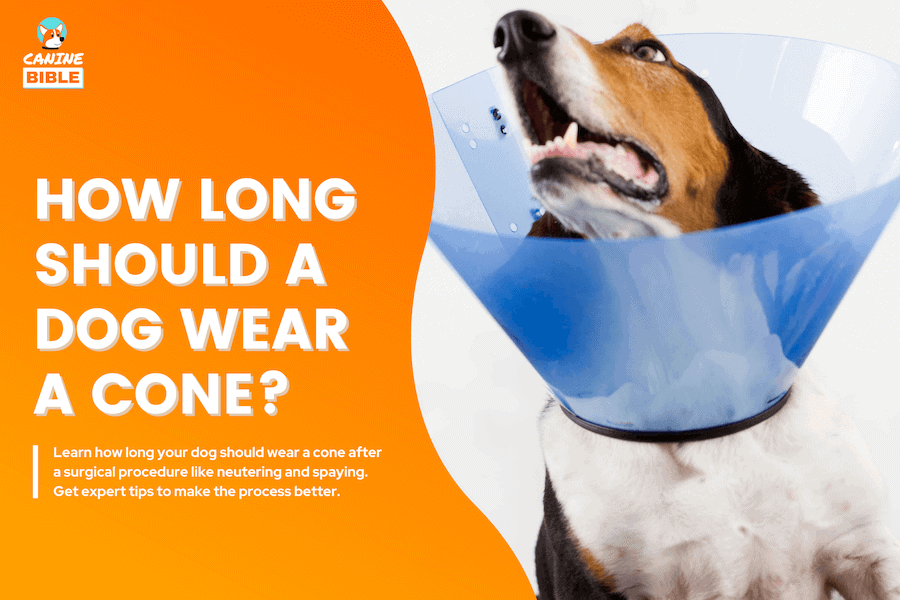
Understanding the Purpose of the Cone
Why a cone is necessary after neutering
After neutering your dog, it is essential to keep a cone (also known as the “Elizabethan collar” or “e-collar”) on them to prevent them from licking, biting, or scratching the surgical site. Neutering surgery involves making an incision in the abdominal area or scrotum in male dogs, and this area needs time to heal properly. Without a cone, your dog may inadvertently irritate or reopen the wound by licking or scratching, which can lead to complications and delay the healing process.
How the cone protects your dog
The primary purpose of the cone is to create a physical barrier between your dog’s mouth and the surgical site. It prevents them from directly accessing the area, reducing the risk of infection and ensuring the incision heals undisturbed. The cone also serves as a visual deterrent, reminding your dog not to engage in any behavior that may harm their recovery.
Common misconceptions about the cone post-neuter
Some dog owners may have misconceptions about the cone, often viewing it as a form of punishment or thinking that their dog will be able to navigate without it. However, it is crucial to understand that the cone is not intended to be a punishment, but rather a necessary precaution to aid in your dog’s healing process. While it may cause temporary inconvenience or discomfort for your dog, it is essential for their well-being. Additionally, most dogs adapt to wearing the cone relatively quickly, and with proper care and attention, they can still lead a comfortable life during the recovery period.
Typical Recovery Duration Following Neuter Surgery
Understanding the neutering process
Neutering surgery is a common and relatively straightforward procedure that involves removing a male dog’s testicles to prevent reproduction and manage certain health conditions. While the surgery itself typically lasts only a short amount of time, the recovery period is crucial for your dog’s well-being.
Typical recovery timeline
The recovery timeline can vary depending on the individual dog and the specific surgical technique used. However, in general, dogs require a minimum of 7 to 10 days to recover fully after neutering. During this time, it is vital to closely monitor your dog’s behavior, care for the surgical site, and ensure they are not excessively active or engaging in behaviors that could disrupt the healing process.
Signs of successful recovery
As your dog recovers from neutering, there are several signs you can look for to indicate successful healing. These include reduced swelling and redness around the incision site, minimal to no discharge, the absence of pain or discomfort, and the gradual return of your dog’s normal behavior and energy levels. However, always consult with your veterinarian to confirm that your dog is indeed healing well before considering removing the cone.
Determining How Long to Keep the Cone
General guideline for cone usage duration
As a general guideline, it is recommended to keep the cone on your dog for at least 10 to 14 days following neutering surgery. This timeframe allows for adequate healing of the surgical site and significantly reduces the risk of complications. However, keep in mind that every dog’s recovery is different, and some may require a shorter or longer cone usage duration. It is always best to consult with your veterinarian for specific instructions tailored to your dog’s needs.
Factors that could alter this duration
Several factors can influence how long your dog should wear a cone after neutering. These factors may include the dog’s age, overall health, size, and the presence of any existing medical conditions. Additionally, the specific surgical technique used and the veterinarian’s recommendations can also play a role in determining the cone usage duration. It is essential to follow your veterinarian’s guidance, as they will have the best understanding of your dog’s unique needs.
Importance of observing your dog’s recovery process
While general guidelines provide a helpful starting point, it is crucial to closely observe your dog’s recovery process and adjust the cone usage duration accordingly. Pay attention to any signs of discomfort, excessive scratching or licking, or any redness or swelling around the surgical site. If you notice any of these signs or have any concerns, contact your veterinarian for further guidance.
Possible Risks of Prematurely Removing the Cone
Complications from excessive licking or scratching
If the cone is removed too soon, your dog may begin licking or scratching the surgical site, leading to complications. Excessive licking or scratching can introduce bacteria into the wound, irritate the incision, and potentially cause infection or reopen the wound. To prevent these complications, it is crucial to keep the cone on until the veterinarian provides clearance for its removal.
Risk of infection
Without proper protection from the cone, your dog’s surgical site is vulnerable to infection. Dogs naturally have bacteria in their mouths, and allowing them to lick the incision can introduce harmful pathogens. Infection can cause significant delays in the healing process and may require additional medical intervention. Keeping the cone on your dog helps minimize this risk and promotes a clean and sterile environment for healing.
Potential for surgical site disruption
Removing the cone prematurely increases the likelihood of your dog disrupting the surgical site. Dogs may accidentally bump into objects, rub against surfaces, or engage in rough play, which can lead to injury or reopening of the incision. By keeping the cone on until the veterinarian advises its removal, you can ensure the surgical site remains protected and undisturbed, allowing for optimal healing.

How to Manage a Dog Wearing a Cone
Feeding your dog while wearing a cone
Feeding your dog can be challenging while they are wearing a cone, but with a few adjustments, it is manageable. Consider using a shallow, wide food bowl that allows your dog to access their food easily. Wetting dry food slightly or switching to wet food can also make it easier for your dog to eat. If your dog struggles to eat with the cone on, consult your veterinarian, who may provide alternative feeding options or recommendations.
Helping your dog sleep comfortably with a cone
Sleeping with a cone can be initially uncomfortable for your dog, but there are ways to help them adjust. Provide a cozy and safe sleeping area, away from any potentially hazardous objects. Placing a soft blanket or pillow in their crate or bed can provide additional comfort. You may also try elevating their bedding slightly to reduce the discomfort caused by the cone pressing against it. As your dog gets accustomed to the cone, they will gradually become more comfortable sleeping with it on.
Assisting in mobility and navigation
Wearing a cone may initially impede your dog’s mobility and make navigation challenging. To assist your dog, create clear pathways in your home, free from obstacles or hazards. Avoid moving furniture or other items during your dog’s recovery period to minimize confusion and bumping into objects. Additionally, provide positive reinforcement and encourage your dog to walk around and explore, as they will adjust to the cone with time.
Comforting Your Dog During the Recovery Period
Reducing anxiety or distress
The recovery period after neutering surgery can be stressful and uncomfortable for your dog. To help them feel more at ease, create a calm environment at home by minimizing noise and disturbances. Providing a designated area where they can retreat and rest can also alleviate anxiety. Additionally, consider using calming aids, such as pheromone sprays or calming music, to help soothe your dog during this time.
Keeping your dog entertained
Enrichment and mental stimulation are essential for your dog’s overall well-being, even during the recovery period. Offer interactive toys, puzzle feeders, or treat-dispensing toys to keep your dog entertained and mentally engaged. However, ensure that the toys or activities do not require excessive physical exertion or risk injuring the surgical site. Consult with your veterinarian for suitable options based on your dog’s specific needs.
Maintaining regular routine as much as possible
During the recovery period, maintaining your dog’s regular routine as much as possible can provide comfort and stability. Stick to a consistent feeding schedule, maintain regular exercise (as advised by your veterinarian), and continue practicing basic obedience commands to keep their minds stimulated. By maintaining their routine, you can help minimize any additional stress your dog may experience due to the recovery process.
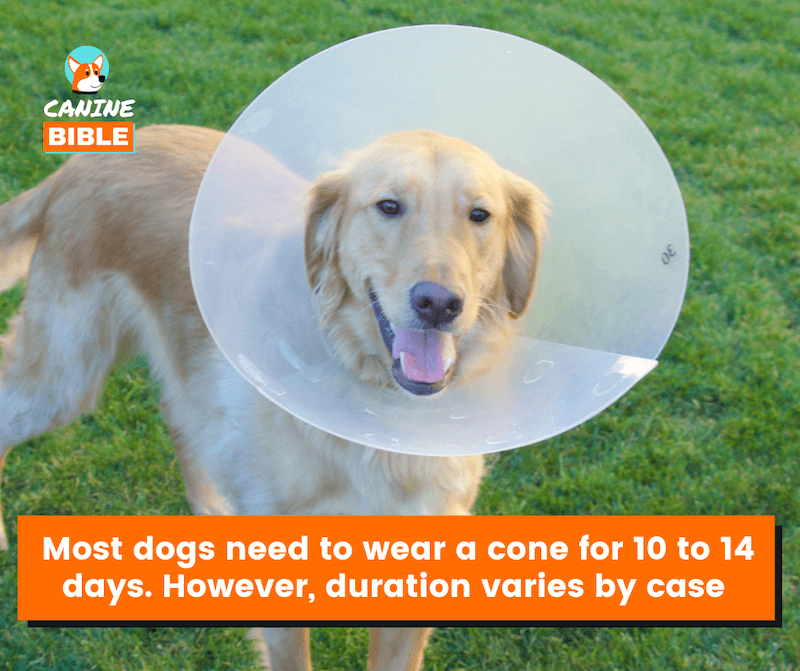
Alternatives to Traditional Cones
Onesie or bodysuits
An alternative to traditional cones is using a onesie or bodysuit designed specifically for dogs. These garments cover the surgical site, providing protection without obstructing the dog’s vision or hindering their movement. They can be more comfortable for some dogs and offer a more secure and less intrusive option during the recovery period. However, it is crucial to ensure that the onesie or bodysuit fits properly and does not cause any discomfort or irritation.
Inflatable collars
Inflatable collars, often referred to as “donut” or “soft” collars, are another alternative to traditional cones. These collars are made of inflatable material and resemble a donut-shaped pillow around the dog’s neck. They allow your dog to have a wider field of vision and a more natural range of motion compared to traditional cones. However, it is important to note that inflatable collars may not provide as much protection as a cone, especially if your dog is persistent in attempting to reach the surgical site.
DIY alternatives and their effectiveness
While DIY alternatives, such as using pool noodles or constructing a modified cone, may seem cost-effective and convenient, they may not provide adequate protection or comfort for your dog. DIY alternatives can easily be tampered with or accidentally removed, potentially exposing the surgical site to licking, scratching, or injury. It is generally recommended to use professionally designed alternatives or consult with your veterinarian before considering a DIY approach.
Common Problems and Solutions while Using a Cone
Issues with eating and drinking
Some dogs may initially struggle to eat or drink with a cone on. To facilitate eating, consider raising the food and water bowls slightly to a more accessible height. Using shallow and wide bowls or dishes can also make it easier for your dog to eat and drink without the cone causing interference. If your dog continues to have difficulty despite these adjustments, consult your veterinarian for further advice or potential alternative feeding methods.
Problems with mobility
Wearing a cone can affect your dog’s mobility, specifically in terms of maneuvering around tight spaces or going up and down stairs. To assist your dog, create clear paths by removing any obstacles or rearranging furniture to provide wider walkways. If your dog is still struggling, consider using temporary ramps or providing extra assistance, such as using a towel to support them gently when going up or down steps.
Potential rash or wounds from cone
In some instances, the cone itself may cause skin irritation, redness, or even minor wounds due to prolonged wear. This can occur if the cone rubs against your dog’s skin or if they are excessively scratching or rubbing their head against surfaces. If you notice any signs of discomfort, irritation, or wounds, consult your veterinarian for guidance. They may recommend adjusting the fit of the cone or providing additional soothing measures to alleviate any discomfort.
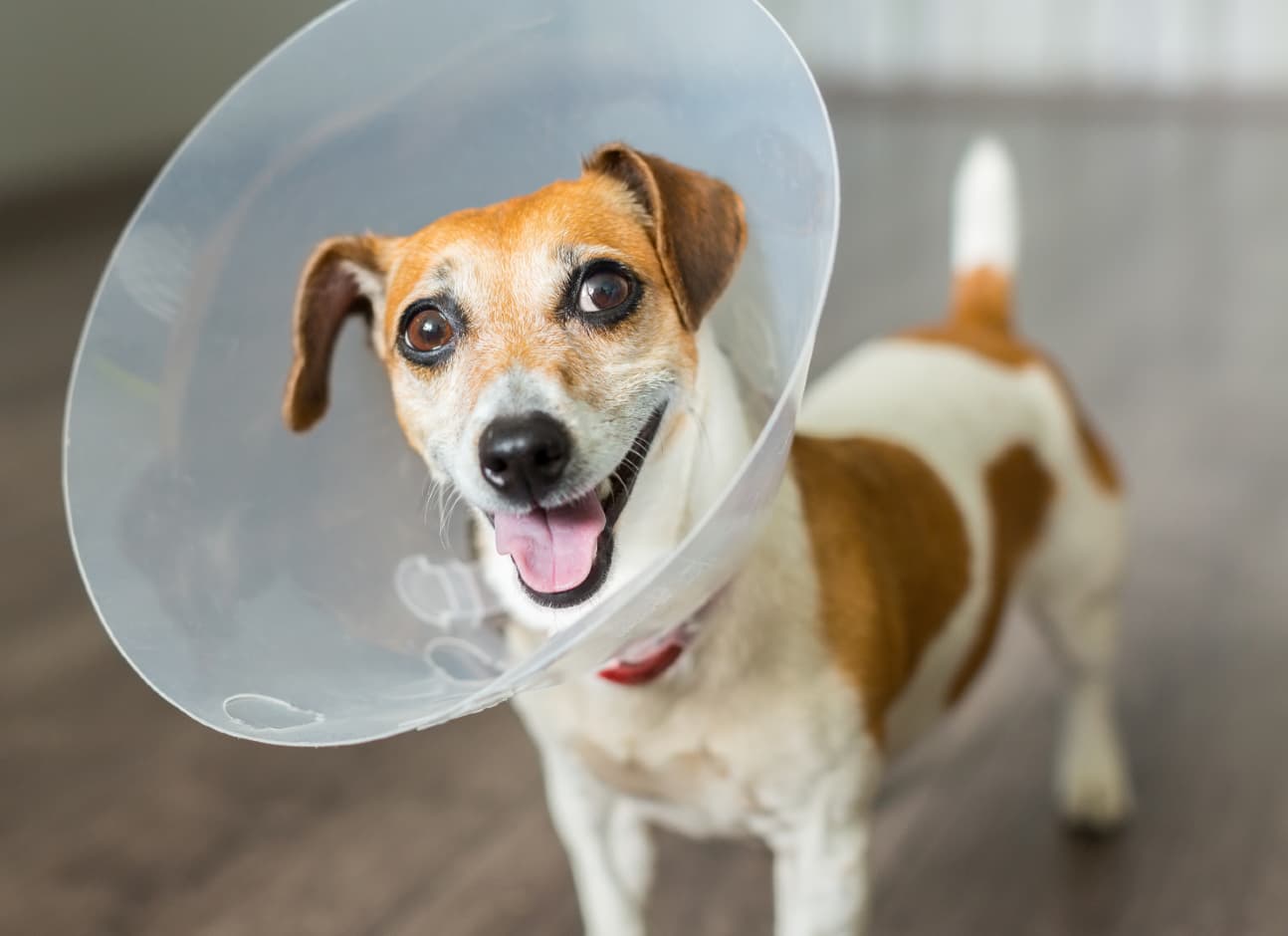
Visiting Vet for Follow Up After Neutering
Why a follow-up appointment is necessary
A follow-up appointment with your veterinarian after neutering surgery is crucial to assess your dog’s recovery progress and ensure that no complications have arisen. During the appointment, the veterinarian will examine the surgical site, check for signs of infection or inflammation, and evaluate your dog’s overall health. This visit provides an opportunity to address any concerns or questions you may have and obtain guidance on when it is safe to remove the cone.
What to expect during the visit
During the follow-up visit, your veterinarian will examine the surgical site and assess the healing progress. They may also remove any external sutures or staples, if necessary. The veterinarian will discuss your dog’s recovery and provide recommendations based on their specific needs. This visit is an ideal opportunity to discuss any concerns or observations you have made during your dog’s recovery period.
What questions to ask your vet
Before the follow-up visit, it can be helpful to compile a list of questions to ask your veterinarian. Some potential questions may include:
- How is my dog’s surgical site healing?
- Are there any signs of infection or complications?
- Is the cone still necessary, or can it be removed?
- Are there any specific care instructions I should continue following?
- When can my dog resume normal activities, such as exercise or bathing?
- Are there any additional steps I should take to ensure a successful recovery?
Remember, your veterinarian is the best resource for guidance and information regarding your dog’s individual circumstances, so don’t hesitate to address any concerns or questions during the follow-up visit.
Dealing With Possible Complications After Neuter Surgery
Identifying signs of complications
While complications after neuter surgery are relatively rare, it is crucial to be vigilant and monitor your dog for any signs of potential issues. Signs of complications may include excessive swelling, persistent redness, discharge, foul odor, increased pain or discomfort, lethargy, loss of appetite, or any other abnormal behavior. If you notice any of these signs or have any concerns, contact your veterinarian immediately for further evaluation.
Immediate actions to take
If you suspect complications or observe any worrisome signs, it is best to err on the side of caution and contact your veterinarian promptly. They may provide instructions over the phone or recommend bringing your dog in for an examination. Avoid attempting any home remedies or administering medications without veterinary guidance, as this can potentially worsen the situation or interfere with subsequent treatment.
Preventive measures for the future
While complications can occur, there are several preventive measures you can take to minimize the risk. Always follow your veterinarian’s post-operative care instructions carefully, including the use of a cone and any prescribed medications. Keep your dog’s activity levels restricted during the recovery period to avoid excessive strain or injury. Regularly inspect the surgical site for any signs of irritation, infection, or complications. By being proactive and attentive, you can help ensure a smooth recovery for your dog following neutering surgery.
In conclusion, keeping a cone on your dog after neuter surgery is essential for their well-being and helps facilitate a successful recovery. Understanding the purpose of the cone, the typical recovery duration, and the potential risks of removing it prematurely allows you to provide the necessary care and protection for your dog. By managing your dog’s mobility, assisting with their daily activities, and employing alternative options, such as onesies or inflatable collars, you can help make the recovery period more comfortable for your furry friend. Always consult with your veterinarian, closely observe your dog’s recovery process, and address any concerns promptly. With proper care and attention, your dog will be on their way to a healthy, happy, and healed state after their neutering surgery.


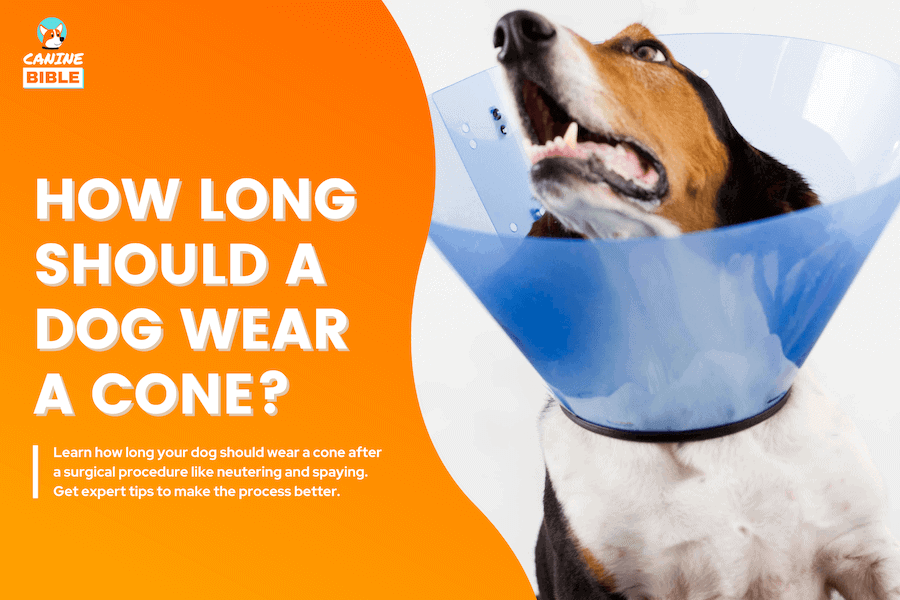
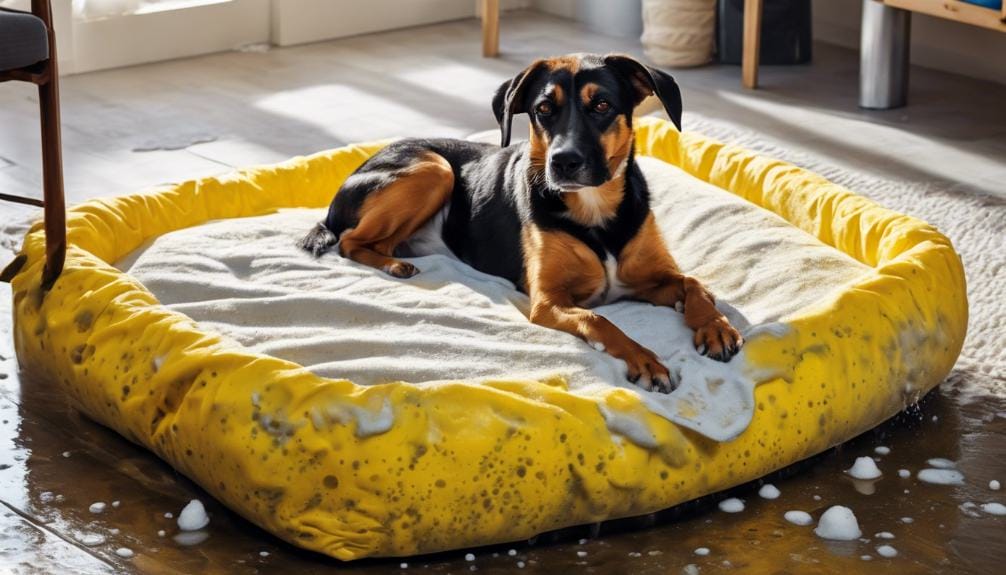
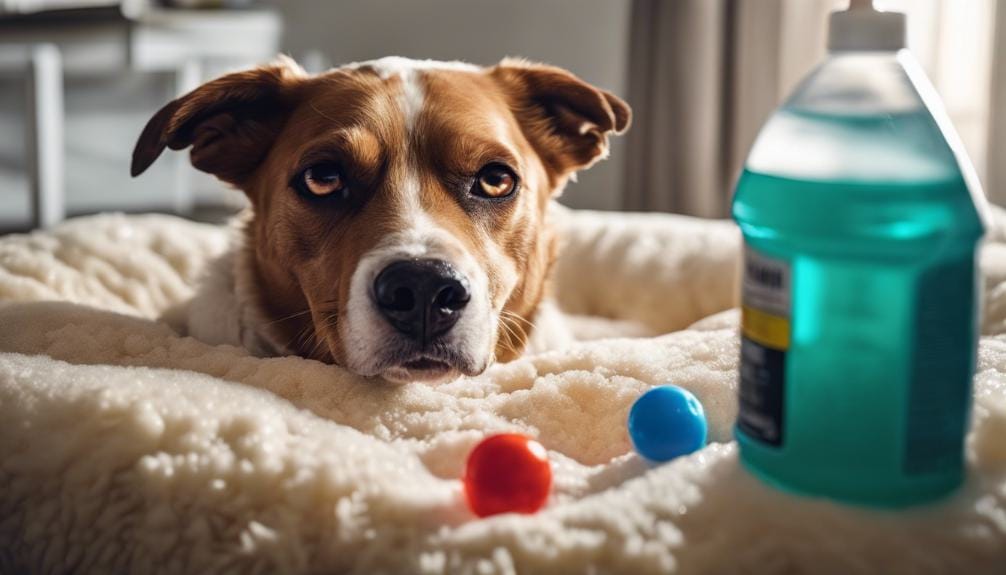
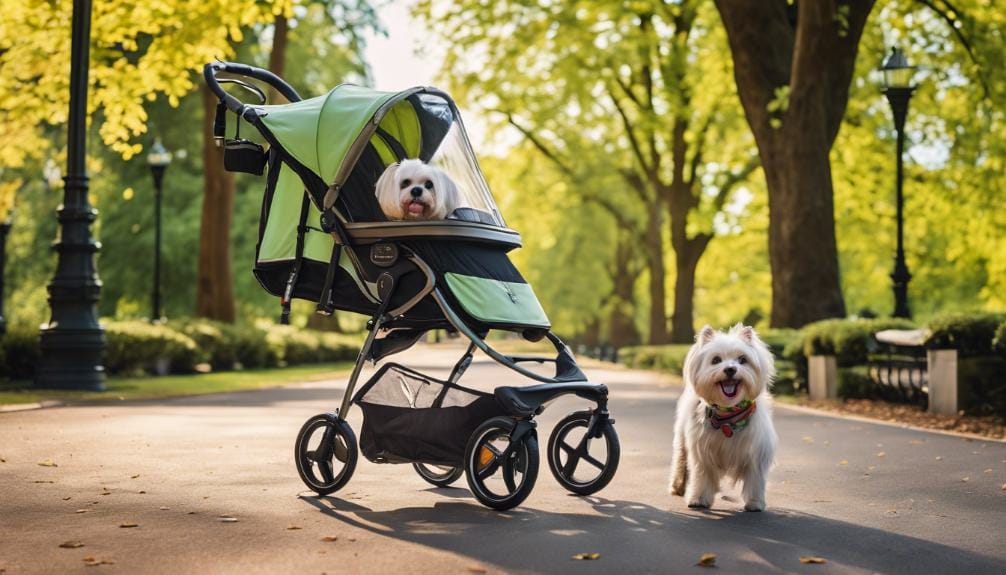
Leave a Reply
You must be logged in to post a comment.